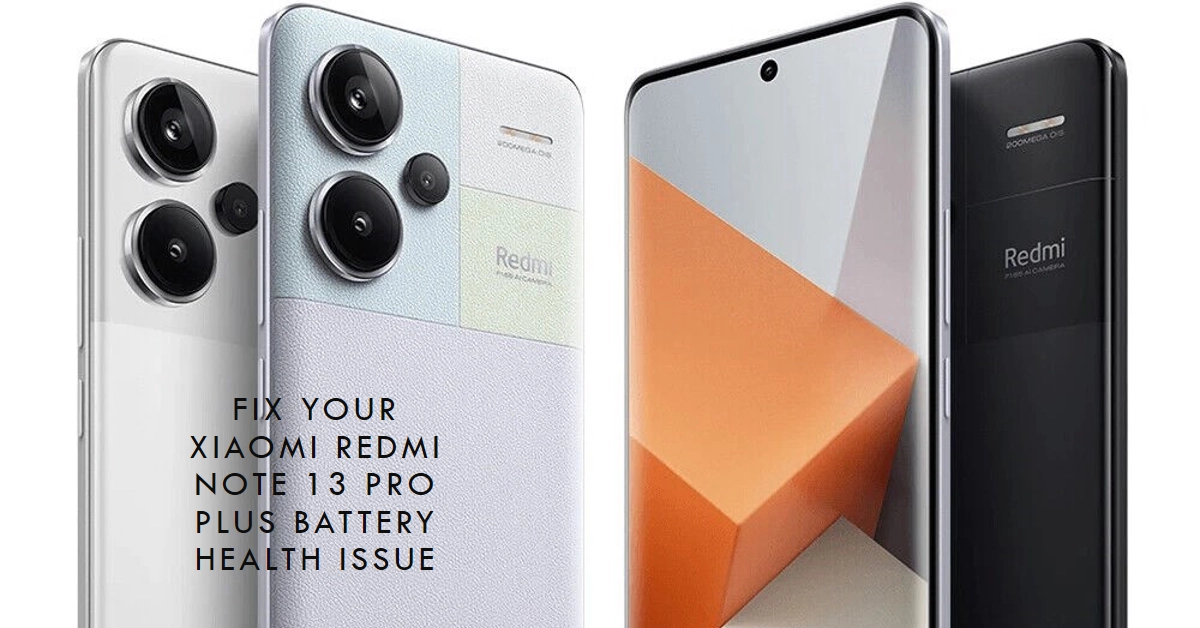The Xiaomi Redmi Note 13 Pro Plus boasts a powerful battery, promising ample juice for all-day use. But what if your phone’s battery isn’t living up to its advertised potential? If you’re experiencing a lower battery mAh than expected, fret not!
This comprehensive guide delves into the root causes and offers practical solutions to restore your Redmi Note 13 Pro Plus’s battery health and get it back to peak performance.
Understanding the Battery mAh Discrepancy
Your Redmi Note 13 Pro Plus boasts a 5100mAh battery, but you might be seeing a lower mAh reading in settings or third-party apps.
This discrepancy can occur due to various factors, including the natural degradation of lithium-ion batteries over time, software issues, or even misconfigured settings. Now, let’s explore the potential culprits and identify the solution tailored to your situation.
Diagnosing the Cause
Below are common factors that may cause battery health discrepancies on your Xiaomi phone:
1. Battery Degradation
Lithium-ion batteries naturally lose capacity over time due to repeated charging cycles and exposure to extreme temperatures. If your phone is more than a year old, this could be the primary reason for the lower mAh reading. While inevitable, proper charging practices can significantly slow down the degradation process.
2. Software Glitches
Sometimes, software bugs or glitches can misinterpret the battery’s actual capacity, leading to inaccurate readings. Updating your phone to the latest software version often resolves such issues.
3. Misconfigured Settings
Certain battery-saving features can limit the maximum charging capacity to extend battery life. While beneficial in the long run, this can also lead to a lower mAh reading. Ensuring optimal charging settings might be the key to unlocking your battery’s full potential.
4. Third-Party App Interference
Some battery monitoring apps might not accurately reflect the actual battery capacity, leading to confusion. Try uninstalling any such apps and relying on the built-in battery management tools for reliable readings.
Resolving the Battery Health Issue
Performing these basic tweaks and workarounds will help eliminate common factors that may causing battery-related issues on your phone:
1. Optimize Charging Habits
- Avoid Extreme Temperatures: Don’t charge your phone in extreme hot or cold environments, as this can stress the battery and accelerate degradation.
- Shallow Discharges: Frequent deep discharges (below 20%) can damage the battery. Aim for shallower discharges and top-up more often for optimal battery health.
- Avoid Overnight Charging: Leaving your phone plugged in overnight exposes the battery to constant trickle charging, which can be detrimental. Unplug it once it reaches 100%.
- Use the Original Charger: Sticking to the original charger and cable ensures optimal charging performance and protects the battery from damage caused by incompatible power sources.
2. Update Your Software
- Check for Updates: Regularly check for and install the latest software updates for your phone. These updates often contain bug fixes that might address battery-related issues.
- Reset to Factory Settings: If software glitches persist, consider performing a factory reset (after backing up your data). This can potentially resolve software-related battery issues.
3. Adjust Battery Settings
- Disable Battery Optimization: Battery optimization features might limit background processes to save power, impacting battery life readings. Try disabling these features and observe the difference.
- Check Maximum Charging Capacity: Some phones allow setting a maximum charging limit to extend battery life. Ensure this limit isn’t set too low, impacting the displayed mAh.
4. Reassess with Built-in Tools
- Battery Usage Statistics: Utilize the built-in battery usage statistics to identify apps draining the battery excessively. Optimize their settings or uninstall them if necessary.
- Battery Health Check: Some Xiaomi devices offer a built-in battery health check tool. Run this tool to get a more accurate assessment of your battery’s health and potential issues.
Advanced Troubleshooting
If the above solutions don’t resolve the issue, consider these advanced options:
- Calibrate the Battery: Some third-party apps offer battery calibration tools. Use these tools cautiously, as improper calibration can exacerbate the problem.
- Consult Xiaomi Support: If none of the aforementioned solutions work, contact Xiaomi support for professional assistance. They might recommend advanced diagnostic tools or hardware repair if necessary.
While a lower than expected battery mAh reading can be concerning, it’s not always a cause for alarm. By understanding the potential causes and implementing the outlined solutions, you can effectively restore your Xiaomi Redmi Note 13 Pro Plus’s battery health and enjoy extended battery life.
Remember, preventive measures like optimal charging habits can significantly prolong your battery’s lifespan and keep your phone performing at its best.
